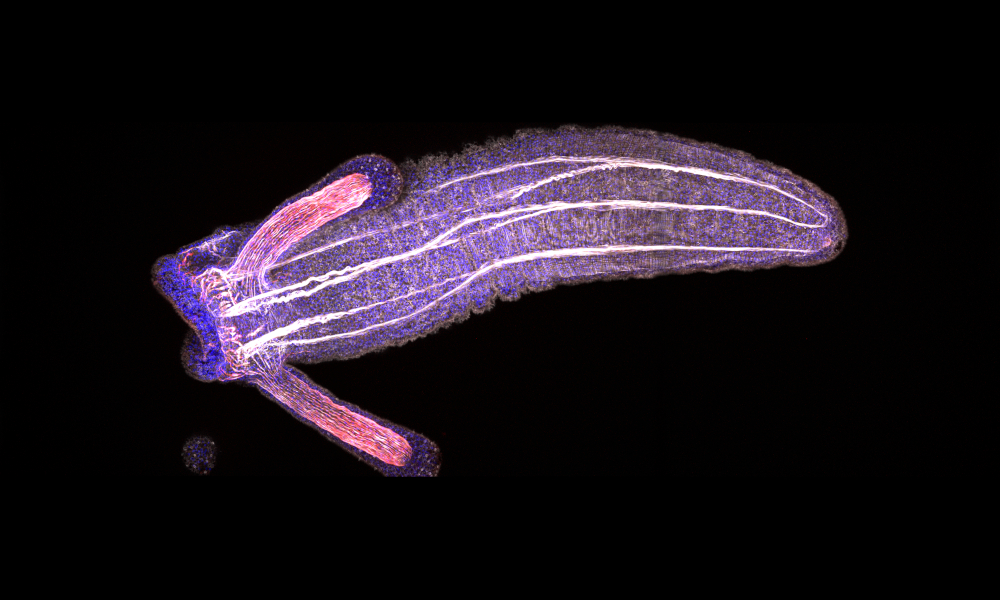
A multifunctional mouth

Despite their plant-like appearance and being named after the terrestrial flower, sea anemones are actually predatory animals that can be found both in deep oceans and in shallow coastal waters worldwide.
This image of a young Nematostella vectensis polyp, seen here in side view, was taken by Anniek Stokkermans, a PhD student in the Ikmi group at EMBL Heidelberg. It shows two of the characteristic tentacles as well as the gaping mouth of the animal. As sea anemones have an incomplete gut, the mouth also functions as an anus: waste and undigested matter is excreted through this opening. In addition, sea anemones breed by liberating sperm and eggs through the mouth into the water.
Next to their multifunctional mouth, their whole metabolism is another fascinating research area. Recently the Ikmi group discovered that the growth of new tentacles happens not only when the sea anemone is a juvenile, but also throughout adulthood, and depends on the amount of food it eats.
This image was taken with a confocal microscope, and shows cell nuclei (blue), muscles (red), and the protein actin (white) both in the cell cytoskeleton and in longitudinal and circular muscle fibres.
Credit: Anniek Stokkermans/EMBL
If you have a stunning picture of your science, your lab or your site, you can submit it here.


